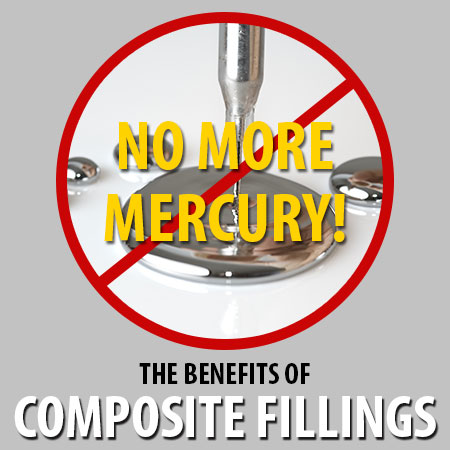
The History of Fillings
Once upon a time, the choices for dental restoration materials were limited. Records dating back as far as 659 A.D. tell us that amalgams (mixtures of silver, mercury, tin, and/or copper) have been used widely for more than 1300 years.
There have been a number of scientific disputes (referred to as the amalgam war) over the health concerns of using mercury, but the American Dental Association has always defended the safety of amalgam fillings. Until recently, amalgam fillings were favored because of their strength, resilience, and relative ease of preparation and placement. In spite of their positive qualities, amalgams have three main drawbacks:
- They are not aesthetically pleasing, may corrode or stain teeth
- They require the removal of some healthy tooth structure
- They expand and contract, which can cause teeth to crack
Composite Fillings
Modern dentistry offers many options for dental restorations. The most commonly used fillings are made of gold, amalgam, composite, or porcelain. Drs. Bo and Christina Levitsky prefer composite fillings because they are:
- Strong
- Tooth-colored
- Can be placed in a single visit
- Require very little removal of healthy tooth structure
- Allow for easy identification of tooth decay nearby
- Bond extremely well to enamel
Composite resin fillings are made from powdered glass and plastic, which is placed directly on the tooth in thin layers, then shaped and polished. Drs. Bo and Christina Levitsky use a special curing light source to accelerate the bonding process.
Composite fillings are generally more durable than porcelain, significantly less expensive than gold, and do not expand and contract like amalgam fillings. Mullica Hill patients often prefer composite fillings because they look just like natural teeth.
If you have any questions about fillings or would like to visit Mullica Hill Family Dentistry for a consultation, please contact us today!
The content of this blog is not intended to be a substitute for professional medical advice, diagnosis, or treatment. Always seek the advice of qualified health providers with questions you may have regarding medical conditions.
Sources
http://www.webmd.com/oral-health/guide/dental-health-fillings